Moniek Bloks's Blog, page 192
January 21, 2020
Denying HRH – The Case of the Duchess of Windsor
When Wallis Simpson married The Duke of Windsor on 3 June 1937, she should have become Her Royal Highness The Duchess of Windsor. But, she was denied the style with her husband bitterly commenting that it was a “nice wedding present.” So why was she denied the style of HRH, and how did King George VI manage it?
The letter
In a letter from King George VI to his brother, he explained that he had consulted the heads of the Dominion and Empire countries and that they had advised that they considered that he had lost all royal rank when he abdicated the throne and was no longer entitled to use the title of Prince or the style of HRH. He then explained that he intended to recreate him His Royal Highness The Prince Edward, the Duke of Windsor, adding that he could not and would not extend the style to Wallis who would only be known as the Duchess of Windsor.
Status of the husband
This decision was against the royal practice, and British common law as a wife automatically takes her status from her husband unless her own rank is higher. When Lady Elizabeth Bowes-Lyon married the Duke of York (future King George VI), this statement was released: “In accordance with the settled general rule that a wife takes the status of her husband Lady Elizabeth Bowes-Lyon on her marriage has become Her Royal Highness the Duchess of York with the status of a Princess.”1 The Duke of Windsor had been assured by his brother that Wallis would become part of the family upon marriage. When he learned of the u-turn, he declared, “My brother promised me there would be no trouble over the trouble! He promised me!” King George VI had faced considerable opposition from both his wife and his mother. They simply would not receive Wallis and demanded that he would find a way to deprive her of becoming an HRH.
Finding a way
King George VI discussed the issue with the British prime minister, Stanley Baldwin, as he believed that once Wallis became a Royal Highness, she would remain one for life even after divorce. He was either unaware of the complexity of the issue or (deliberately?) misinformed. Perhaps he believed that as the sovereign, as Fountain of Honours, all titles, awards and peerages are said to descend via the throne through the monarch. Still, he had no active role in the acquisition of the style of HRH by any of the other royal wives by marriage. King George VI continued to find a way to deprive the style of HRH from Wallis even asking the Home Secretary, the Lord Chancellor and the Attorney-General to find some legal means.
He asked Stanley Baldwin, “Is she a fit and proper to become a Royal Highness after what she has done in this country; and would the country understand it if she became one automatically on marriage? I and my family and Queen Mary all feel that it would be a great mistake to acknowledge Mrs Simpson as a suitable person to become Royal. The Monarchy has been degraded quite enough already.”
It was then decided that the only way forward was to deprive the Duke of Windsor of his royal rank and then restore it with restrictions. Letters Patent were drawn up and declared that Edward VIII had upon abdicating the throne lost all royal rank and status. King George VI would recreate him a Royal Duke with the style of HRH. He added that the 1917 Letters Patent issued by King George V restricted the style of Royal Highness to those in the lineal succession to the throne, but the Duke of Windsor was no longer eligible for the throne. According to the new Letters Patent, King George VI was actually making an exception in granting him the style of HRH and therefore claimed also to be able to restrict it to him alone.
The final argument
However, King George VI was obliged to seek the advice of his minister, and he was not empowered to alter royal titles, according to the Statute of Westminster, without consulting the Dominions. Not wanting a different opinion, King George VI wrote to Stanley Baldwin telling him exactly what he wished the advice to be. On 26 May 1937, the discussion and ratification of the Letters Patent that created the former King a Royal Prince and allowing him to withhold the style of HRH from Wallis were included in Stanley Baldwin’s last Cabinet meeting as Prime Minister. Two days later, the official announcement appeared in the London Gazette.2
Thus, King George VI and his advisers presented the argument. The former King had lost all royal rank upon abdication, and the new King was perfectly entitled to restore this rank and to restrict the style of HRH to him alone.
Losing royal rank
However, the former King never lost his royal rank. On 5 February 1864, Queen had issued Letters Patent saying, “that besides the Children of Sovereigns of these Realms, the Children of the Sons of any Sovereign of Great Britain and Ireland shall have and at all times hold and enjoy the title, style and attribute of “Royal Highness,” with their titular dignity of Prince or Princess prefixed to their representative Christian names.”3 Queen Victoria’s Letters Patent were later confirmed by King George V in 1917.4
The only way the former King’s royal rank or style of HRH could have been taken away would have been through the issuance of Special Letters Patent which specifically deprived him of these. This was never done, not even during the abdication process. Upon his abdication, he immediately became a Prince of the United Kingdom of Great Britain and Ireland with the qualification of Royal Highness pursuant to the 1917 Letters Patent, confirmed by his own father. King George VI had even – inadvertently – recognised his brother’s royal rank immediately after his abdication by instructing Sir John Reith to introduce him as His Royal Highness Prince Edward before his speech to the nation.
The Duchess of Windsor
It was obvious that King George VI was using the denial of the style of HRH for the Duchess as a way to keep both of them out of the country. The Duke had vowed never to return to England unless Wallis was an HRH. The King could not act against common law and yet he had done so. King George VI had acted illegally to deprive her of the style of Royal Highness.
As expected, the Duke of Windsor considered it to be a great insult to his wife.5 Eventually, their household staff in France referred to her as “Son Altesse Royale.”6
The post Denying HRH – The Case of the Duchess of Windsor appeared first on History of Royal Women.
Titles and styles: How to address Harry & Meghan
With a deal now in place for The Duke and Duchess of Sussex, it was announced in quite a confusing statement that “The Sussexes will not use their HRH titles as they are no longer working members of the Royal Family.” Unfortunately, “HRH titles” is not actually something that exists. The HRH is a style of address, and the statement made it seem like all royal titles were being stripped.
Harry and Meghan are currently Their Royal Highnesses The Duke and Duchess of Sussex. If they stop using the HRH – it is not officially removed, mind you! – they will still be The Duke and Duchess of Sussex. Then came the rumour that they would be styled as “Harry, Duke of Sussex” and “Meghan, Duchess of Sussex.” The use of a first name will remind you of the situation of Diana, Princess of Wales after her divorce from the Prince of Wales and it is indeed a style used for the divorced wives of peers. Since we’ve have not had any divorce announcement, this simply cannot be correct.
Without the HRH, it is most likely that they will be addressed as “Sir” and “Ma’am” while official communications would still refer to them as The Duke and Duchess of Sussex. It appears that Buckingham Palace has now also realised the confusion they have caused and perhaps we can expect some official statement in the next few days.
The post Titles and styles: How to address Harry & Meghan appeared first on History of Royal Women.
January 20, 2020
Female Heirs – Princess Ingrid Alexandra of Norway
With the introduction of absolute primogeniture in most European monarchies, there are now several Queens in waiting. With our new series Female Heirs, we’ll be taking a look at those young women who will one day rule in their own right.
Princess Ingrid Alexandra of Norway was born on 21 January 2004 at 9.13 A.M. in the National Hospital in Oslo as the first child of Crown Prince Haakon and his wife Crown Princess Mette-Marit (born Tjessem Høiby). Norway introduced absolute primogeniture in 1990, and so Ingrid Alexandra is second in line behind her father. She was not overtaken by her younger brother Sverre Magnus, who was born in 2005. Ingrid Alexandra also has an elder half-brother named Marius from her mother’s previous relationship.
Embed from Getty Images
Her baptism took place on 17 April 2004, in the chapel of the Royal Palace. Her godparents are her grandfather King Harald V, her aunt Princess Märtha Louise, Crown Prince Frederik of Denmark, Crown Princess Victoria of Sweden, King Felipe V of Spain and her grandmother Marit Tjessem.
Embed from Getty Images
She began her education in 2010 at the Jansløkka elementary school where her elder half-brother also went to school. She transferred to the private English-language Oslo International School in 2014. In 2020, she moved to Oslo’s Uranienborg School.
Embed from Getty Images
Embed from Getty Images
Because of her age, she does not perform many royal duties yet. She has taken part in the celebrations of the Constitution Day, and she took part in the opening of the Princess Ingrid Alexandra Sculpture Park in 2016. Princess Ingrid Alexandra also lit the cauldron for the opening ceremony of the Winter Youth Olympics in Lillehammer.
Embed from Getty Images
Ingrid Alexandra is expected to become Norway’s first Queen regnant since Queen Margaret, who ruled over Norway, Denmark and Sweden 500 years ago. She is also distantly in line to the British throne as a descendant of Maud of Wales, but she is preceded by her brother as the United Kingdom still practised male-preference primogeniture at the time of their births.
The post Female Heirs – Princess Ingrid Alexandra of Norway appeared first on History of Royal Women.
January 19, 2020
Queen Mathilde – The first Belgian-born Queen of the Belgians
Jonkvrouw Mathilde d’Udekem d’Acoz was born on 20 January 1973 as the eldest child of Jonkheer Patrick d’Udekem d’Acoz and Countess Anna Maria Komorowska. She was born in the Edith Cavell Hospital in Uccle. Her grandfather and uncle carried the title of Baron. Mathilde spent her childhood at the Castle of Losange with her three sisters and one brother. Despite it being a castle, she grew up without much luxury, and she was taught the value of money. Her family was a close one. Mathilde followed her grandmother’s religious example and went to mass twice a week.
She studied modern languages at the Institut Vierge Fidèle in Brussels and received a degree as a speech therapist from the Institut libre Marie Haps. She also has a psychology degree from the Catholic University of Louvain. From 1996, Mathilde taught at a school for children’s with speech impediments while travelling as much as she could. Tragedy struck the family on 14 August 1997 when Mathilde’s younger sister Marie-Alix and their grandmother Princess Sophia Sapieha were killed in a car accident Marie-Alix was only 22 years old.
After an unassuming youth, it was perhaps quite a shock to be thrust into the spotlight in September 1999 when she was presented to the world as the fiance of Philippe, the Duke of Brabant, and future King of the Belgians. No one knew who she was, and as the media descended on her, she was in the midst of exams for her psychology degree. She had known Philippe at least since before the tragic car accident, and he attended the funerals and comforted her in her grief. She would later say, “My grandmother and sister will never come back. Even though it’s been ten years, the suffering stays the same. Time doesn’t change anything.”
Mathilde would have to give up her job as a speech therapist, but her job was in good hands with her sister Elisabeth. On 29 October 1999, Mathilde visited the school with Philippe and Mathilde was presented with a model of her classroom made by the children. A young boy called after them as they left, “My teacher will be Queen!”
Embed from Getty Images
An engagement party would follow on 13 November 1999 at the Palace of Laeken with over 1800 guests. The wedding was set for 4 December 1999 and Mathilde dazzled in a dress by Eduoard Vermeulen at Natan. She also wore a veil belonging to her mother-in-law Queen Paola, which had also been worn by Paola’s grandmother and her daughter Princess Astrid. Her tiara had been given to Queen Astrid upon the birth of the future King Albert. The Mayor of Brussels told Mathilde, “You are the living proof of the future of this country.” Mathilde was now a Princess of Belgium and Duchess of Brabant.
Embed from Getty Images
Mathilde and Philippe had begun their Joyous Entrees into Belgian cities even before marriage and continued them as a couple early in 2000. They also started doing official royal duties. At the end of 2000, they travel to Korea on an economic mission. Barely a year after the wedding, Mathilde had conquered Belgium. On 1 December 2000, she founded the Princess Mathilde Fund, which awards an annual prize to a project aimed towards helping those less fortunate. During the official presentation, Mathilde said, “It’s been nearly a year to the day that I married Prince Philippe. I have used that first year to get to know my husband better, to learn more about my history and institutions, but I have learned the most from my meetings with ordinary people. As a speech therapist, I learned to listen, listen to people who have trouble expressing themselves. That also means listening to those who have no voice in our society.”
In early 2001, they travelled to Thailand, but after their return, Mathilde slows down her duties a bit to focus on her psychology exams. However, on 7 May 2001, Mathilde and Philippe announced that they were expecting their first child. Belgium had abandoned salic law in 1991 in favour of absolute primogeniture in 1991, and so whatever gender the child would turn out to be – they would be the heir. Mathilde finished her exams in June, and the couple took a well-deserved break in France.
A little earlier than expected and via caesarian section, because the cord had wrapped around the baby’s neck, Mathilde gave birth to a healthy baby girl. It was on 25 October 2001. Philippe announced his daughter’s birth, still wearing bright green scrubs. He said, “It’s a little lady!” A 101-gun salute followed the birth of the new heir; her name was Elisabeth. The new Princess was baptised on 9 December 2001. In September 2002, Mathilde graduated cum laude. She had admirably combined becoming a Princess and a mother with the writing of her thesis.
Embed from Getty Images
A son named Prince Gabriel was born on 20 August 2003, followed by Prince Emmanuel, who was born on 4 October 2005 and finally, Princess Eléonore, who was born on 16 April 2008. With a wish to raise the children as normal as possible, Mathilde and Philippe plan their time efficiently. Shortly after the birth of her fourth child, Mathilde’s father passed away. He was buried with his daughter Marie-Alix.
Embed from Getty Images
On 3 July 2013, Philippe’s father, King Albert, announced his intention to abdicate the throne. He officially did so on 21 July 2013 and Philippe succeeded him as King of the Belgians. Mathilde became the first Belgian-born Queen of the Belgians. Their daughter Elisabeth became the first Duchess of Brabant in her own right and is expected to succeed as the first Queen regnant of Belgium.1
The post Queen Mathilde – The first Belgian-born Queen of the Belgians appeared first on History of Royal Women.
January 18, 2020
The Year of Queen Wilhelmina – The Birth of Princess Margriet
After many years of the Dutch succession depending on a single heartbeat, the birth of a healthy third daughter to the heiress presumptive Princess Juliana came as a huge relief. Princess Juliana was Queen Wilhelmina’s only surviving child, and she had given birth to a daughter named Beatrix in 1938 and a daughter named Irene in 1939. She had suffered a miscarriage in 1941.
The circumstances surrounding Margriet’s birth were not the happiest. In May 1940 Princess Juliana and her family were evacuated to the United Kingdom at the start of the Second World War. A month later, the family travelled on to Ottowa in Canada, which is where Margriet was born on 19 January 1943. Wilhelmina received a telephone call from her son-in-law Bernhard at half-past one in the morning to inform her of the birth of her third grandchild. She would not meet her new grandchild until several months when she visited Canada for the christening. The christening took place on 29 June 1943 at the St. Andrews Church in Ottawa.
Embed from Getty Images
Margriet would not return to Dutch soil until 2 August 1945 after the liberation of the Netherlands. The final years before Queen Wilhelmina’s abdication, Margriet and her family lived at Soestdijk Palace where her mother prepared to take over as Queen. A fourth daughter named Maria Christina (Marijke, later known as Christina) was born on 18 February 1947. Juliana had contracted rubella during the pregnancy and Christina was born nearly blind. It weighed heavily on Juliana. On 4 September 1948, Queen Wilhelmina abdicated in her daughter’s favour, and Margriet was now the daughter of a Queen. Margriet was sent to the same progressive school as her two elder sisters in 1949. The girls’ father was not happy with the school as did not focus on academic achievements.
Margriet continued her studies at the Baarns Lyceum from which she graduated in 1961. Afterwards, she went to study at the University of Montpellier in France for a year before applying to study law at the University of Leiden. She also trained with the Red Cross in Amersfoort. During her studies in Leiden, Margriet would meet her future husband, Pieter van Vollenhoven.
Embed from Getty Images
Margriet and Pieter’s engagement was announced on 10 March 1965, and they were married on 10 January 1967 in The Hague. They moved into The Loo Palace after their wedding before moving to Huis Het Loo, near the palace in 1975. They went on to have four sons together, and their sons were granted the title “Prince of Orange-Nassau” and with “Highness” as a style of address. Their father has remained untitled. They currently also have 11 grandchildren.
Embed from Getty Images
Princess Margriet has moved from being the monarch’s granddaughter to the monarch’s daughter to being the monarch’s aunt. She still performs royal duties for her nephew King Willem-Alexander. She is currently eighth and last in the line of succession. Her sons are not in the line of succession because they are not within three degrees of kinship to the monarch.1
The post The Year of Queen Wilhelmina – The Birth of Princess Margriet appeared first on History of Royal Women.
January 17, 2020
Book News February 2020

The American Duchess
Paperback – 19 March 2020 (US) & 6 February 2020 (UK)
Life has always been made difficult for those marrying into England’s royal family. In 1936, just months into his reign, King Edward VIII proposed to Wallis Simpson, a divorced American woman. Gossip ran wild, and that cacophony of speculation and distrust both hid the real Wallis, and forced Edward into abdicating so that he might marry the woman he adored.
In this intimate biography Anna Pasternak seeks to understand Wallis – and her relationship with Edward and The Crown. Using testimony from her closest friends, she shows the warm, loyal, intelligent woman who was written off and undermined by the powerful, often manipulative men of the Establishment. This is Wallis Simpson’s story as it has never been told before.
Previously published as Untitled.
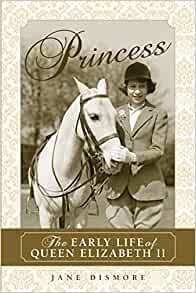
Princess: The Early Life of Queen Elizabeth II
Paperback – 1 February 2020 (UK & US)
In November 2017 the Queen and the Duke of Edinburgh celebrated their 70th wedding anniversary. As a 13-year-old Princess, she fell in love with Prince Philip of Greece, an ambitious naval cadet, and they married when she was 21; when she suddenly became Queen at 25, their lives changed forever. Philip has been her great support, but fortunately she also had a solid foundation that helped prepare her for a life dedicated to duty. With previously unpublished material and unique memories from friends and relatives who have known her since childhood, this book looks afresh and in richer depth at her life as Princess, glittering yet isolating. Vivid detail and anecdotes reveal more about her, the era in which she grew up and the people who shaped her life. The archives of royal confidante Lady Desborough and Private Secretary Sir Alec Hardinge reveal unseen letters from the Princess and the royal family, giving intimate insights into their lives and minds. Here is her sadness at the death of her nanny, Alah; her joy in her children; her melancholy as a young wife when Philip returns to his ship; the sensitivities of her father. Here too is the Princess with the aristocratic Bowes Lyons, her mother’s family, who featured significantly in her life, yet rarely appear in books. The author sheds new light on anomalies surrounding the birth of her mother who, it has been asserted, was the daughter of the family’s cook. The strain of wartime on the royal family is highlighted in new material contrasting the stance of the Princess’s uncles, the Duke of Windsor and David Bowes Lyon. In contrast with her upbringing, Philip’s early life was turbulent, although their lives shared some interesting parallels. Lady Butter, a relation of Philip and friend of the Princess, recalls time spent with each of them; and unpublished documents show how intelligence agencies considered the socialist influence of the Mountbattens on Philip and thus on the royal court. More importantly, Princess traces how an “ordinary country girl” suddenly found herself in the line of succession to the crown at age ten when her Uncle, the Duke of Windsor, abdicated the throne to his brother Albert (“Bertie” to family and friends), the once and future King George VI. Breaking new ground for a future English monarch, she became the first female member of the royal family to serve on active duty during World War II, and broke tradition by sending her children away to school rather having them privately tutored. Indeed, by the time of her coronation in 1953, she had already achieved a “broad and solid background from which she could draw during the rapidly changing times of her long reign. Out of a little princess they made a Queen.”

The Last Hurrah: The 1947 Royal Tour of Southern Africa and the End of Empire
Hardcover – 11 February 2020 (US)
The Last Hurrah captures in vivid detail the 1947 royal tour of southern Africa, both the high-water mark of the British Empire and the very moment at which it began to unravel. It is also an intimate, revealing portrait of the royal family – King George VI, Queen Elizabeth and the Princesses Elizabeth and Margaret – hard at work in the national interest, and succeeding triumphantly against all odds.
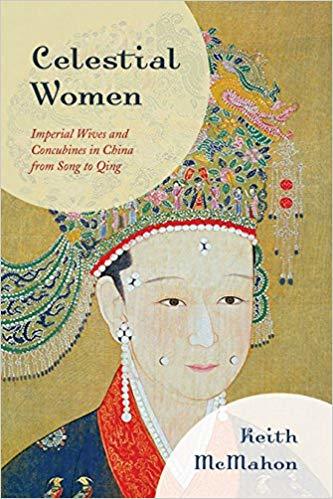
Celestial Women: Imperial Wives and Concubines in China from Song to Qing
Paperback – 15 February 2020 (US & UK)
This volume completes Keith McMahon’s acclaimed history of imperial wives and royal polygamy in China. Avoiding the stereotype of the emperor’s plural wives as mere victims or playthings, the book considers empresses and concubines as full-fledged participants in palace life, whether as mothers, wives, or go-betweens in the emperor’s relations with others in the palace. Although restrictions on women’s participation in politics increased dramatically after Empress Wu in the Tang, the author follows the strong and active women, of both high and low rank, who continued to appear. They counseled emperors, ghostwrote for them, oversaw succession when they died, and dominated them when they were weak. They influenced the emperor’s relationships with other women and enhanced their aura and that of the royal house with their acts of artistic and religious patronage. Dynastic history ended in China when the prohibition that women should not rule was defied for the final time by Dowager Cixi, the last great monarch before China’s transformation into a republic
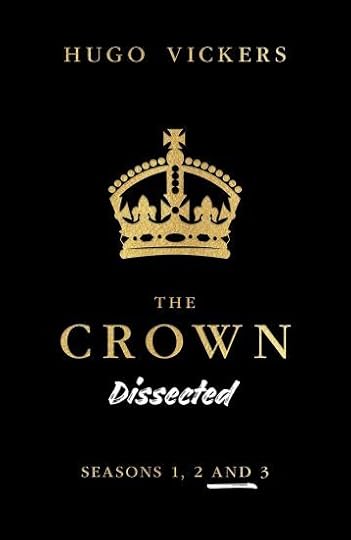
The Crown Dissected: Seasons 1, 2 and 3
Paperback – 7 February 2020 (US & UK)
Hugo Vickers is an acknowledged authority on the British Royal Family. He has commented on royal matters on television and radio since 1973 and worked as historical adviser on a number of films. He is the author of books on the Queen Mother, the Duchess of Windsor, Princess Andrew of Greece (Prince Philip’s mother) and Queen Mary all of whom are featured in the popular Netflix show, The Crown.
Since November 2016, Peter Morgan has presented millions of viewers with the first 3 seasons of The Crown, positioned as an accurate, dramatized portrayal of the life and reign of Queen Elizabeth II.
Now, in The Crown Dissected, Vickers separates fact from fiction in all 3 seasons of the series. Episode-by-episode analysis dissects the plots, characterization and historical detail in each storyline. Vickers tells us what really happened and what certainly did not happen.
It’s a must-read for fans of the show, and proves that more than a little artistic license has gone into the making of The Crown.
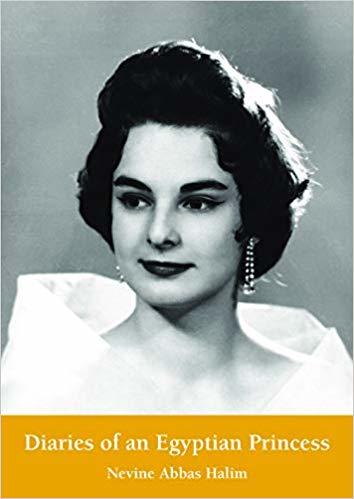
Diaries of an Egyptian Princess
Hardcover – 3 March 2020 (US) & 1 February 2020 (UK)
Princess Nevine Halim is a direct descendant of the dynasty that ruled Egypt from 1805 until the abdication of King Farouk in the wake of the Free Officers coup in 1952. The eldest of three children, she was born in Alexandria on 30 June 1930, the great-great-granddaughter of Muhammad Ali Pasha on her father’s side and the great-granddaughter of Khedive Ismail on her mother’s side. Drawing on her own diary, as well as those of her mother and grandmother, she takes us on a journey from the First to the Second World War, from Egypt to Europe and the United States, from a world of glamor, wealth, and privilege to the fugitive existence of the exile and social outcast after 1952. We also meet her father, Abbas Halim, the charming rebel prince who clashed with King Fuad for championing the rights of workers, as well as many other members of the Egyptian royal family and a glittering host of international royals, politicians, and film stars. Packed with royal gossip and political intrigue, with tales of young love and fashionable society, and of princes and princesses dancing perilously close to the edge of a way of life that would one day fall apart and then vanish, Diaries of an Egyptian Princess is an event-filled account of an endlessly fascinating epoch in modern Egyptian history.

Matilda: Empress, Queen, Warrior
Paperback – 17 March 2020 (US) & 11 February 2020 (UK)
This new biography explores Matilda’s achievements as military and political leader, and sets her life and career in full context. Catherine Hanley provides fresh insight into Matilda’s campaign to claim the title of queen, her approach to allied kingdoms and rival rulers, and her role in the succession crisis. Hanley highlights how Matilda fought for the throne, and argues that although she never sat on it herself her reward was to see her son become king. Extraordinarily, her line has continued through every single monarch of England or Britain from that time to the present day.
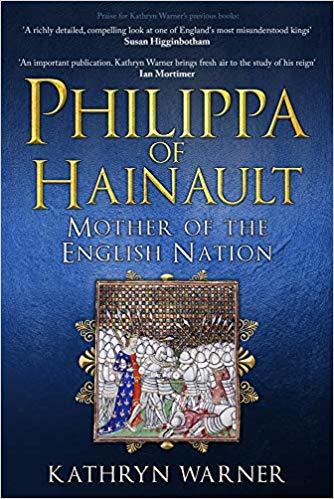
Philippa of Hainault: Mother of the English Nation
Hardcover – 15 October 2019 (UK) & 1 February 2020 (US)
This is the first full-length biography of the queen who stood in the middle of the some of the most dramatic events in English history. Philippa’s marriage was arranged in order to provide ships and mercenaries for her mother-in-law to invade her father-in-law’s kingdom in 1326, yet it became one of the most successful royal marriages in English history, enduring for more than four decades. Philippa stood by her husband’s side as he began a war against her uncle, Philip VI of France, and claimed his throne. She frequently accompanied him to Scotland, France, and Flanders. She also acted as regent in 1346 when Edward was away from his kingdom at the time of a Scottish invasion, and appeared on horseback to rally the English army to victory. Philippa’s popularity with the people due to her compassion helped maintain peace in England throughout Edward’s reign.
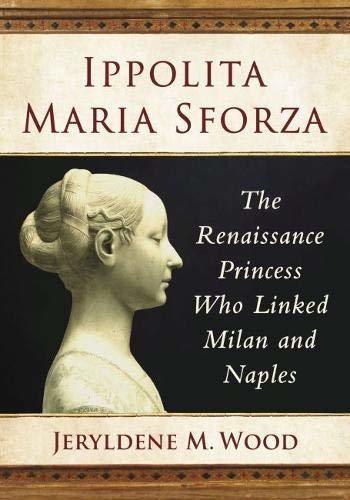
Ippolita Maria Sforza: The Renaissance Princess Who Linked Milan and Naples
Paperback – 3 December 2019 (US) & 28 February 2020 (UK)
In April 1455, ten-year-old Ippolita Maria Sforza, a daughter of the Duke and Duchess of Milan, was betrothed to the seven-year-old crown prince of the Kingdom of Naples as a symbol of peace and reconciliation between the two rival states. This first full-scale biography of Ippolita Maria follows her life as it unfolds at the rival courts of Milan and Naples amid a cast of characters whose political intrigues too often provoked assassinations, insurrections, and wars. She was conscious of her duty to preserve peace despite the strains created by her husband’s arrogance, her father-in-law’s duplicity, and her Milanese brothers’ contentiousness. The duchess’ intelligence and charm calmed the habitual discord between her families, and in time, her diplomatic savvy and her great friendship with Lorenzo de’ Medici of Florence made her a key player in the volatile politics of the peninsula for almost 20 years.
Drawing on her letters and contemporary chronicles, memoirs, and texts, this biography offers a rare look into the private life of a Renaissance woman who attempted to preserve a sense of self while coping with a tempestuous marriage, dutifully giving birth to three children, and supervising a large household under trying political circumstances.

Japan’s Imperial House in the Postwar Era, 1945–2019 (Harvard East Asian Monographs)
Hardcover and Paperback – 18 February 2020 (US) & 28 April 2020 (UK)
With the ascension of a new emperor and the dawn of the Reiwa Era, Kenneth J. Ruoff has expanded upon and updated The People’s Emperor, his study of the monarchy’s role as a political, societal, and cultural institution in contemporary Japan. Many Japanese continue to define the nation’s identity through the imperial house, making it a window into Japan’s postwar history.
Ruoff begins by examining the reform of the monarchy during the US occupation and then turns to its evolution since the Japanese regained the power to shape it. To understand the monarchy’s function in contemporary Japan, the author analyzes issues such as the role of individual emperors in shaping the institution, the intersection of the monarchy with politics, the emperor’s and the nation’s responsibility for the war, nationalistic movements in support of the monarchy, and the remaking of the once-sacrosanct throne into a “people’s imperial house” embedded in the postwar culture of democracy. Finally, Ruoff examines recent developments, including the abdication of Emperor Akihito and the heir crisis, which have brought to the forefront the fragility of the imperial line under the current legal system, leading to calls for reform.
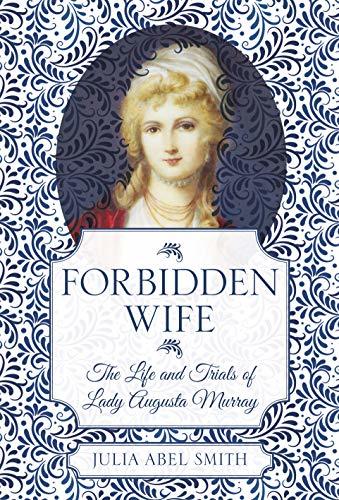
Forbidden Wife: The Life and Trials of Lady Augusta Murray
Hardcover – 3 February 2020 (UK)
Kindle Edition – 3 February 2020 (US)
On the night of 4 April 1793, two lovers were preparing to compel a cleric to perform a secret ceremony. The wedding of the sixth son of King George III to the daughter of the Earl of Dunmore would not only be concealed – it would also be illegal.
Lady Augusta Murray had known Prince Augustus Frederick for only three months but they had already fallen deeply in love and were desperate to be married. However, the Royal Marriages Act forbade such a union without the King’s permission and going ahead with the ceremony would change Augusta’s life forever. From a beautiful socialite she became a social pariah; her children were declared illegitimate and her family was scorned.
In Forbidden Wife Julia Abel Smith uses material from the Royal Archives and the Dunmore family papers to create a dramatic biography set in the reigns of Kings George III and IV against the background of the American and French Revolutions.
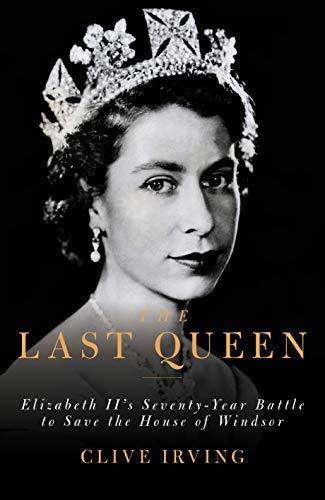
The Last Queen: Elizabeth II’s Seventy-Year Battle to Save the Monarchy
Kindle Edition – 11 February 2020 (UK) & US)
In 2020, the Queen finally appears to be at ease in the modern world, helped by the new generation of Windsors, while – ironically – the campaign for Brexit encourages in the British people a backward yearning for a glorious age that never really existed. But here, through Clive Irving’s unique insight, we find a more fragile institution, whose extraordinarily dutiful matriarch has managed to persevere by making a Faustian pact with the media.
The Last Queen is not a conventional biography, and is therefore not limited by the traditions of that genre. It follows Elizabeth and her family’s struggle to survive in the face of unprecedented changes in attitudes towards the royal family with the critical eye of an investigative reporter who is present and involved.
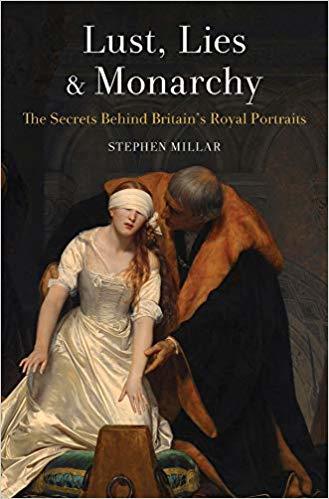
Lust, Lies and Monarchy: The Secrets Behind Britain’s Royal Portraits
Paperback – 3 February 2020 (US)
People have long been fascinated by the stories behind royal portraits. This volume takes readers inside royal families by way of great paintings, like Holbein’s Henry VIII, van Dyck’s Charles I, Millais’ The Princes in the Tower, Freud’s Elizabeth II, and more. Featuring incredible, little known stories of the royals and illustrates, this beautiful collection is illustrated with color paintings, photos, family trees and Royal London walking tours with maps.
The post Book News February 2020 appeared first on History of Royal Women.
January 16, 2020
Elizabeth of Bohemia: A Novel about Elizabeth Stuart, the Winter Queen by David Elias Book Review
In 1596, Elizabeth Stuart, the eldest daughter of King James VI Scotland and Anne of Denmark, was born. In 1603 the old Queen Elizabeth I of England passed away without leaving an heir. The throne passed to James who was crowned James I of England. As the daughter of the King of England, Elizabeth Stuart was in the public eye from a young age, and as a granddaughter of Mary Queen of Scots and god-daughter of Elizabeth I, she was well-loved in many circles. Despite Europe being forever at war, James I aimed to be a peaceful king and the self-styled Rex Pacificus planned to use dynastic marriages to keep peace with other nations, rather than waging war. From a string of suitors, in 1613 Elizabeth was married to Frederick V Elector Palatine.
James had chosen an ideal match for his daughter, and it was love at first sight upon their meeting. The wedding of Elizabeth and Frederick took place on Valentine’s Day and was one of the biggest of the Seventeenth Century; the celebrations went on for months on end and carried on throughout the newlywed’s journey to Frederick’s ancestral lands. Elizabeth and Frederick lived in wedded bliss for many years in the beautiful Palatinate town of Heidelberg, in modern-day Germany. A number of children were born there in quick succession; Frederick Henry, Charles Louis and Elisabeth were all born within six years. Despite a revolt and three members of the reigning Emperor’s retinue being thrown from the window of Prague castle, in 1619 Ferdinand ascended the throne of Bohemia and also took the title of Holy Roman Emperor. Within a matter of months, the Bohemians had overthrown Ferdinand and elected Frederick V, Elizabeth’s husband, as their king.
After just a few months of being Queen, Elizabeth’s happiness began to unravel, as Ferdinand aimed to regain his crown. He lost and Elizabeth’s life as queen was now over. The saviour of the winter family was the United Provinces. Connected by blood to Frederick and enemies to the Habsburgs, the Princes of Orange provided a home at The Hague for the family as well as financial support. Elizabeth’s time as an exile was filled by her constant letter writing; to members of English Parliament, ambassadors, her brother Charles I and many others. (Read more here)
Elizabeth of Bohemia: A Novel about Elizabeth Stuart, the Winter Queen by David Elias begins in Elizabeth’s youth and takes us through the tragedies of her life, beginning with the death of Henry Frederick, Prince of Wales to whom she was especially close. We see her early married life and her and husband’s short reign as King and Queen of Bohemia through her own eyes. Although it is an interesting perspective, the story felt very drawn out for me and I often found myself skipping ahead, hoping that it would become more lively. Overall, I am not sure this book was to my taste but to read from Elizabeth’s perspective was certainly a nice change.
Elizabeth of Bohemia: A Novel about Elizabeth Stuart, the Winter Queen by David Elias is available now in the UK and the US.
The post Elizabeth of Bohemia: A Novel about Elizabeth Stuart, the Winter Queen by David Elias Book Review appeared first on History of Royal Women.
January 15, 2020
Victoria Melita of Saxe-Coburg and Gotha – The Princess with the tragic eyes (Part two)
Victoria Melita was already planning a new future with Grand Duke Cyril, who was also her first cousin. Tsar Nicholas II of Russia was the head of the family, and he was firmly against the match. Not only was a marriage between first cousins against the rules of the Russian Orthodox Church, but Victoria Melita was also a divorcee. For now, even the notion of marriage seemed out of the question as Cyril was also a possible heir to the Russian throne. When Alexandra Feodorovna gave birth to a son in 1904, his succession seemed less likely. Cyril and Victoria Melita spent most of that summer together, and Cyril was assured by the confessor of the Imperial Family that, according to canon law, there was no obstacle if he wished to marry his divorced cousin.
And so, on 8 October 1905 – without the permission of Tsar Nicholas II – Cyril and Victoria Melita were married near Munch with only a few guests present. A few days later, Cyril left for St. Petersburg to inform the family of the wedding. When he arrived, the Tsar had already been informed, and he was deprived of his honours and income, and he was told to leave Russia within 48 hours. He had not expected such a harsh punishment. A life in exile now awaited the newlyweds, and Victoria Melita was denied the title of Grand Duchess. Nevertheless, she was happy.
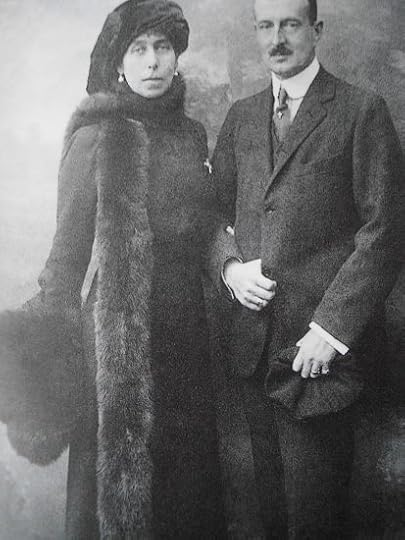 Victoria Melita and her second husband
Victoria Melita and her second husbandThey divided their time between Nice and Tegernsee, and soon Victoria Melita found that she was pregnant again. On 20 January 1907, she gave birth to a daughter named Marie. Shortly after they received the news that Cyril’s uncle Alexis had died and that only Cyril was invited to the funeral. He went and found that the Tsar had finally relented and had decided to give back his title. With the death of his father and other circumstances, Cyril now found himself third in the line of succession. In July 1907, Victoria Melita was formally acknowledged as Grand Duchess.
On 26 April 1909, she gave birth to a second daughter named Kira and the following year, they were finally allowed to live in Russia. They were soon favoured members of the Russian society, and Victoria Melita loved her new life. Alexandra Feodorovna was never much of a hostess, and the close-knit family life of the Tsar and Tsarina was overshadowed by the haemophilia-stricken Alexei. Alexandra – whose brother Ernest had been Victoria Melita’s first husband – had been very much against the marriage with Cyril and the two women never got along.
The outbreak of the First World War divided the family. Victoria Melita visited her sister in Romania several times to ask for provisions and help. The Russian Revolution also began taking shape and on 16 March 1917, Tsar Nicholas abdicated the throne. A desperate Victoria Melita wrote to her sister, “Neither pride, nor hope, nor money, nor future and the dear past blotted out by the frightful present; nothing is left, nothing!”1 To add to her worries, she had found herself pregnant for the first time in eight years. They decided to settle in Finland for the time being, and they left St. Petersburg in June 1917. On 30 August 1917, she gave birth to a son named Vladimir. They would remain in Finland for a lot longer than planned – three years in total. During these years, they were often short of food, and Victoria Melita was forced to ask the Crown Princess of Sweden – born Princess Margaret of Connaught – for baby food. As news of the murders of the Tsar, Tsarina and other family members began to come in, they were all horrified.
In the autumn of 1919, the family left Finland and headed for Germany before travelling on to Zurich where Victoria Melita’s mother was staying. She was in terrible health and died in October 1920 of heart failure. Victoria Melita wrote, “I feel quite as if life were over, my own life I mean, so much have we lived for & in Mama ever since I can remember. I sometimes hardly know how to bear the void now. All these years have been one long straining to reach her again & hardly had I found her only to be separated forever. Nothing matters to me any more now, only to live for the children.”2 The family began to divide their time between Nice and Coburg.
In 1924, Cyril proclaimed himself the guardian of the Imperial throne even though the Tsar’s mother Maria Feodorovna refused to publically accept that the death of her son and his family. He also elevated his three children to Grand Duke/Duchess. However, very few exiled Russian actually recognised him as Tsar. Victoria Melita went to visit the United States, hoping to have her husband recognised as Tsar.
On 24 November 1925, their eldest daughter Marie married Charles, Hereditary Prince of Leiningen and their first grandson was born the following year. Soon afterwards, Victoria Melita and her husband moved to France, where the weather was warmer and better for their health. However, she lived in constant that something would happen to her son. In October 1930, they celebrated their silver wedding anniversary, but just three years, she found out that Cyril had an affair and their relationship was never the same again. Her sister later wrote, “Her strength has run out, a sort of grey despair sets in, a feeling that only death could liberate her from the intolerable, crushing, overwhelming burden.”3
In early 1936, she contracted a chill but still went ahead with a visit to her daughter to attend the christening of her newest granddaughter Matilda. Afterwards, she suffered a stroke which left one side of her body paralysed, and she was left unable to speak properly. There was little the doctors could do. On 1 March, her pulse began to slow and just after midnight on 2 March, she died. Her sister later wrote, “The whole thing was tragic beyond imagination, a tragic end to a tragic life. She carried tragedy within her – she had tragic eyes – always – even as a little girl – But we loved her enormously, there was something mighty about her -she was our Conscience. But when he betrayed her, she did not know how to forgive, so she allowed him to murder her soul. From then onwards, her strength became her weakness, her undoing – she was too absolute, she could not overcome herself.”4
Her body was wrapped in a long white robe, and her sister placed white lilacs around her as she lay in her coffin. She was buried in Coburg in the family vault beside her parents and brother. In 1995, her body was moved to the Peter and Paul Fortress in St. Petersburg where she was finally laid to rest beside her husband and son.
The post Victoria Melita of Saxe-Coburg and Gotha – The Princess with the tragic eyes (Part two) appeared first on History of Royal Women.
January 14, 2020
Victoria Melita of Saxe-Coburg and Gotha – The Princess with the tragic eyes (Part one)
Princess Victoria Melita of Saxe-Coburg and Gotha was born on 25 November 1876 as the daughter of Alfred, Duke of Saxe-Coburg and Gotha, and Grand Duchess Maria Alexandrovna of Russia. She was thus a granddaughter of Queen Victoria. She was born in the San Antonio Palace on Malta, which was her parents’ official winter residence. She was christened in the palace on New Year’s Day 1877 and received the names Victoria – for her grandmother – and Melita – for her birthplace. She was known in the family as “Ducky.”
Victoria Melita was very close to her elder sister Marie, later Queen of Romania. They had a Scottish nurse named Nana Pitcathly, and soon they were joined in the nursery by two more sisters, Alexandra and Beatrice. They also had an elder brother named Alfred. One her earliest surviving correspondence is an 1882 note to her grandmother Queen Victoria, wishing her a happy birthday. The note is in French as her mother despised the English language, and Victoria Melita did not start writing in English until she was eight years old.
In 1886, they returned to the island of Victoria Melita’s birth when her father was appointed Commander-in-Chief of the Mediterranean squadron. Victoria Melita received her very own pony there – its name was Stuart. Her sister Marie later recalled, “Our ideas about riding were anything but civilised. We were entirely fearless, and our chief pace was full gallop, quite regardless of the ground.”1 At the age of 12, Victoria Melita and her family moved to Coburg where they lived at Palais Edinburg. Her father was expected to succeed his childless uncle Ernest II as Duke of Saxe-Coburg and Gotha. Marie and Victoria Melita had lessons together in geography, history, literature, religion, French and several other subjects.
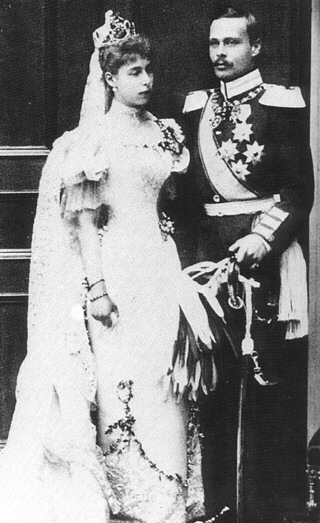 Victoria Melita and her first husband (public domain)
Victoria Melita and her first husband (public domain)In 1891, she was skillfully introduced to her first cousin Ernest – the son of Princess Alice – who was exactly eight years older than her. Queen Victoria already had the marriage in mind, but Victoria Melita wasn’t too sure about it. Ernest succeeded as Grand Duke of Hesse and by Rhine in March 1892, making a match even more urgent. His father had expressed the wish that he should marry Victoria Melita shortly before he died. Her sister Marie was actually the first to marry – to Crown Prince Ferdinand of Romania in January 1893. Both Ernest and Victoria Melita remained reluctant to marry. However, she eventually accepted his proposal in January 1894.
Around 11 A.M. on 19 April 1894, they were married at Schloss Ehrenburg at Coburg with Queen Victoria among the guests. Her aunt, the Empress Frederick, wrote, “Ducky looked very charming and distinguee. She had a plain white silk gown with hardly any trimming, and Aunt Alice’s wedding veil, a light diadem of emeralds with a sprig of orange blossom stuck in behind. It all suited her charmingly. During the service, Aunt Marie was very calm, but the tears rolled down Uncle Alfred’s cheeks and Grandmama’s and mine too…”2
That summer, Victoria Melita learned that she was pregnant and on 11 March 1895, she gave birth to a daughter named Elisabeth. Their newfound joy did not reflect in their relationship, and their marriage was already falling apart. They were simply unsuited to each other. It is unclear exactly when Victoria Melita would meet the man who would become her second husband – Grand Duke Cyril Vladimirovich – but when they did, there was an instant attraction.
 Victoria Melita and Elisabeth (public domain)
Victoria Melita and Elisabeth (public domain)Meanwhile, Ernest and Victoria Melita grew apart as Queen Victoria continued to hope that Victoria Melita would bear a son and heir for the Grand Duchy. They grew closer somewhat in their shared grief over the death of Victoria Melita’s brother Alfred in 1899, and she became pregnant once more. She had already suffered a miscarriage, and this pregnancy led to the stillbirth of a premature son. Tragically, she would lose her father that same year as well, followed by Queen Victoria in January 1901. With the death of the family matriarch, a divorce now seemed likely for Ernest and Victoria Melita. In October 1901, Victoria Melita went to stay with her mother and did not wish to return to Darmstadt. She wrote to her husband that she was going to ask for a divorce – and he agreed.
He later wrote to his elder sister, “Now that I am calmer I see the absolute impossibility of going on leading a life which was killing her (Victoria Melita) & driving me nearly mad. For to keep up your spirits & laughing face while ruin is staring you in the eyes & misery is tearing your heart to pieces is a struggle which is fruitless. I only tried for her sake. If I had not loved her so, I would have given it up long ago.”3 In December, the marriage was dissolved by a verdict of the Supreme Court of the Grand Duchy. Their young daughter was to spend half the year with her mother and the other half with her father. The divorce was considered to be a disgrace in royal circles, and it seemed that most blamed Victoria Melita for it. Tsarina Alexandra Feodorovna wrote to her sister-in-law, “She will not be missed in the country, as she never made herself beloved nor showed any liking for the country. Alas! Poor girl, she is utterly miserable and without a home…”4 Their daughter had been the only good thing to come out of the marriage and for Ernest she was, “the sunshine of my life.”5 In the autumn of 1903, as Elisabeth and Ernest were visiting the Tsar and Tsarina in Poland, Elisabeth woke up gasping for air. Victoria Melita was immediately summoned, but just as she was preparing to leave a telegram arrived announcing the little girl’s death. An autopsy confirmed that she had died from typhoid.
Victoria Melita did not depart and instead waited for Ernest to return to Darmstadt with their daughter’s body. At the funeral, Victoria Melita put her Hessian Order on her daughter’s coffin – there was now nothing left for her in Darmstadt.
Part two coming soon.
The post Victoria Melita of Saxe-Coburg and Gotha – The Princess with the tragic eyes (Part one) appeared first on History of Royal Women.
January 13, 2020
Princess Fawzia Latifa of Egypt – A story about “What If?”
She received the name of the most beautiful princess of the Muhammad Ali dynasty in Egypt (her grandfather’s sister, Empress Fawzia, who was the first wife of Iran’s Shah Mohammad Reza Pahlavi), she was born far away from the country of her ancestors, she never saw her father or other relatives ruling, she has a royal title but lives as a commoner. The pretty girl whose destiny was so special is Princess Fawzia Latifa, the daughter of the last King of Egypt, Ahmed Fouad.
He father reigned as the last King of Egypt and the Sudan from July 1952 to June 1953, when he was deposed at the tender age of one year. Her grandfather, King Farouk, had hoped that his abdication would appease the revolutionaries and other anti-royalist forces and that his young son could serve as a unifying force for the country. It was not meant to be, for in July 1953, Egypt abolished the monarchy and became a republic.
Embed from Getty Images
Fawzia-Latifa was born in Monte Carlo, Monaco, in 1982 to her father, Ahmed Fouad and her French-Jewish mother, who upon conversion to Islam, took the name Fadila. She has an older brother, Prince Muhammad Ali and a younger brother, Prince Fakhruddin. The marriage of her parents ended in divorce. The young lady lived between France and Switzerland with some occasional vacations in Egypt (after Egyptian President Anwar Sadat restored her father’s Egyptian citizenship, and the family was thus able to visit Egypt). The little information available about Princess Fawzia says that she is 36 years old and she is the last and youngest granddaughter of King Farouk I. Fawzia works in public relations and the media. She has also worked as a diplomat with the delegation of the Principality of Monaco in Austria. But we cannot help wondering how life could be for someone coming from such an illustrious background.
During her trips to Egypt, did she visit the former residences of her family, did she listen to the stories of her relatives, did she admire the photos of the beautiful and elegant women of the royal family? Did she feel part of that history and compelled to continue their work? We can only imagine so…
Princess Fawzia, the sister of her grandfather, once said: “Twice in my life, I lost the crown. Once I was the Queen of Iran, and once I was the princess here. It’s all gone now. It doesn’t matter. When you visit the tombs of kings and queens, you see they leave everything behind.” Maybe there is a lot of wisdom in these words and a lesson for younger generations of royal families. You have to live with the legacy of your family but also carve your own place in the world without being intimidated by all that history you carry in your genes.
And the young woman called Fawzia-Latifa seemed to have done just that. On 19 January 2019, she married a French electronics engineer, at the residence of her father in Geneva, Switzerland. Sources close to the former royal family said the princess’s wedding would be limited to family and close friends. In Egypt, the news passed almost unnoticed. The counterfactual history would indicate that if there had still been a monarchy, the country would have prepared lavish celebrations for the wedding of their beautiful princess. But human destinies are not made by scenarios and counterfactual history. Fawzia-Latifa lives, hopefully happily ever after, the life of a commoner with a fascinating personal history. And her story still in the making leaves us wondering: What If?
The post Princess Fawzia Latifa of Egypt – A story about “What If?” appeared first on History of Royal Women.



